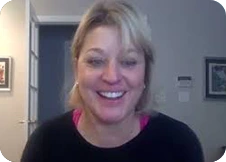As a new homebuyer, it can be difficult to step into the complex world of mortgages. And so it’s important to be aware of the exact details of your monthly mortgage payments.
Generally, homebuyers need to pay PMI if the mortgage down payment of their loan is less than 20%. So till the time, they reach 20% equity of their home, PMI is be to paid monthly.
Private mortgage insurance (PMI) safeguards the lender’s investment, in case the borrower defaults on their monthly payments.
TIPS TO REMOVE PMI
- To remove PMI, homebuyers must reach 20% to 22% home equity.
- As soon as the borrowers’ equity hits 20%, they should get in touch with the lenders and follow the necessary steps.
- Borrowers can also consider refinancing or leveraging home reappraisal during periods of increased home values.
What Is PMI?
PMI or MGI (mortgage guarantee insurance) is the monthly additional amount that a borrower pays when their loan down payment is less than 20%. PMI protects the lender against losses if the borrower defaults.
Private mortgage insurance transfers the default risk from the lender to the insurer. When the borrower pays more than 20% of the loan, lenders remove PMI.
Also, the borrower has to pay the PMI if they have a poor credit score, PMI has to be paid. The total amount of your PMI depends on your mortgage plan. It usually costs about 0.1% to 2% annually of the total loan.
Is PMI Different from Other Insurance Types?
Here’s the comparison between PMI and some other types of insurance:
Homeowners Insurance
Homeowners insurance protects homeowners from financial losses due to damage or loss of their property. It typically covers events such as fire, theft, vandalism, and certain natural disasters.
Unlike PMI, homeowners insurance benefits the homeowner rather than the lender and covers a broader range of risks.
Health Insurance
Health insurance provides coverage for medical expenses and healthcare services. Its purpose is to protect individuals from the financial burden of necessary healthcare services.
It’s important to note that PMI is specifically related to mortgage loans. Each type of insurance has its unique characteristics, coverage, and requirements, tailored to specific risks and needs.
Mortgage Insurance Required for Conventional Loans
The type of mortgage insurance that a borrower opts for depends on several factors such as the loan-to-value (LTV) ratio and their financial situation. Further categories of PMI are:
Borrower-Paid Mortgage Insurance (BPMI)
BPMI is the same as PMI as it protects the lender from default borrowers. With BPMI, the borrower pays the mortgage insurance premium directly as a separate monthly payment. This payment is in addition to the mortgage payment.
Lender-Paid Mortgage Insurance (LPMI)
With LPMI, the lender pays the mortgage insurance premium on behalf of the borrower. Here’s how LPMI typically works:
- Higher Interest Rate: The lender includes the insurance cost into the interest rate, instead of charging the borrower.
- No Separate Premium: Unlike PMI or BPMI, no separate monthly payment is due from the borrower for LPMI. The mortgage payment consists of the principal and interest payments only.
- Lender’s Protection: LPMI serves as insurance coverage for the lender in case the borrower defaults on the loan. This policy reimburses the lender for their losses if the borrower fails to make payments.
- Cancellation of Mortgage Insurance: The borrower cannot remove to cancel LPMI as it is integrated with the interest rate.
Furthermore, as with PMI, the borrower needs to reach a home equity of up to 20% to get rid of LPMI.
How Much Does PMI Cost?
The total PMI cost you pay on your loan depends on various factors. These factors include total loan amount, down payment, debt-to-income (DTI) ratio, and credit score.
The bigger the down payment, the lesser the PMI cost you may have. A higher DTI ratio and credit score can help you achieve lower interest rates on your loan.
Usually, PMI costs you around 0.1% – 2% annually of the total loan amount. If you are a new homebuyer, the below-listed factors will help you calculate your PMI cost in advance:
- Loan amount: Calculate the loan amount you can afford.
- Down Payment: Based on the loan amount, note the affordable down payment. Calculate the percentage of your down payment for the loan.
- Loan Term: For new home buyers, a 30-year loan term is most common. Calculate by what time you would be able to get more than 20% of your home equity.
All these can give you an idea of how much would you pay for PMI.
Who Does PMI Cover?
PMI covers the lender, not the borrower. Its purpose is to protect the lender if the borrower defaults on the mortgage loan. Entering foreclosure safeguards the lender’s loss if the borrower ceases making mortgage payments. PMI coverage typically includes the following:
- Principal and interest
- Default and foreclosure costs
- Mortgagee’s loss
It’s important to note that PMI does not provide any direct benefit or coverage to the borrower. However, PMI allows borrowers to obtain a mortgage loan with a smaller down payment along with an additional monthly premium.
How to Get Rid of PMI?
To get rid of PMI on a loan, you typically need to meet certain requirements. Here are steps to eliminate PMI:
- Payoff Your Mortgage: Once you reach 20% to 22% of your home equity, PMI gets an automatic removal. This is valid for both conventional loans and FHA loans.
- Request PMI Cancellation: Once you have reached 20% of home equity, contact your lender to request PMI cancellation. They may require an appraisal to verify the property’s current value and confirm the home equity achieved.
- Refinance the Loan: If you have built up sufficient equity in your home, you can consider refinancing your mortgage. With a new loan, you may no longer need PMI if your home equity is above 20%. However, consider the costs and potential impact on interest rates before deciding to refinance.
- Home Reappraisal: During heightened home appreciation, home appraisal can help you remove PMI. You can earn more home equity when the price value of the home has increased.
Additionally, make sure the lender signs the PMI cancellation document post-PMI removal.
Find Homes for Sale Under Your Specific Budget
Bottom Line
Escaping completely from PMI can’t be possible, since everybody can’t afford to pay a hefty down payment. You must be consistent with your monthly mortgage payments and get rid of PMI at the earliest.
Additionally, consult a real estate professional to get yourself well-versed with all the complicated mortgage-related terms.
Here are a few more mortgage-related blogs for you!
» Mortgage Protection Insurance Explained: Do you need it?
» What is Mortgage Amortization: How your mortgage payments work?
» Mortgage Preapproval: What it is and how to get it?
Find Your New Home With Houzeo
With thousands of property listings, Houzeo.com is one of the biggest property listing sites in the US. Find condos, townhouses, co-ops, and other types of homes for sale on Houzeo.
» Need More Clarity? Read these exclusive Houzeo reviews and learn why the platform is the best in America’s competitive housing market.
Frequently Asked Questions
Can PMI be removed if my home’s value increases?
Yes, if the value of your home increases significantly, it can potentially help you remove private mortgage insurance (PMI) sooner.
Will refinancing get rid of PMI?
Yes, if the value of your home has increased enough to reduce your loan-to-value ratio (LTV) to 80% or less, refinancing can remove your PMI.
How to get rid of PMI on FHA loan?
You can get rid of PMI on FHA loan by refinancing once your home reaches 20 percent equity.














.webp)
